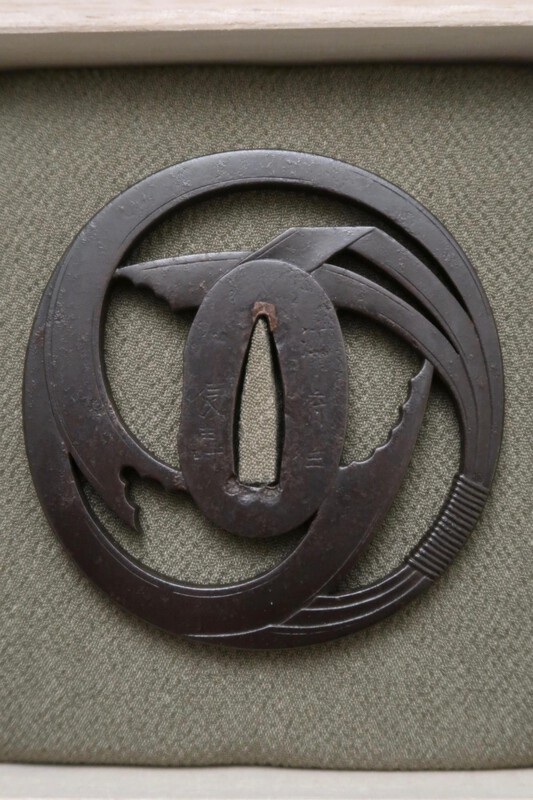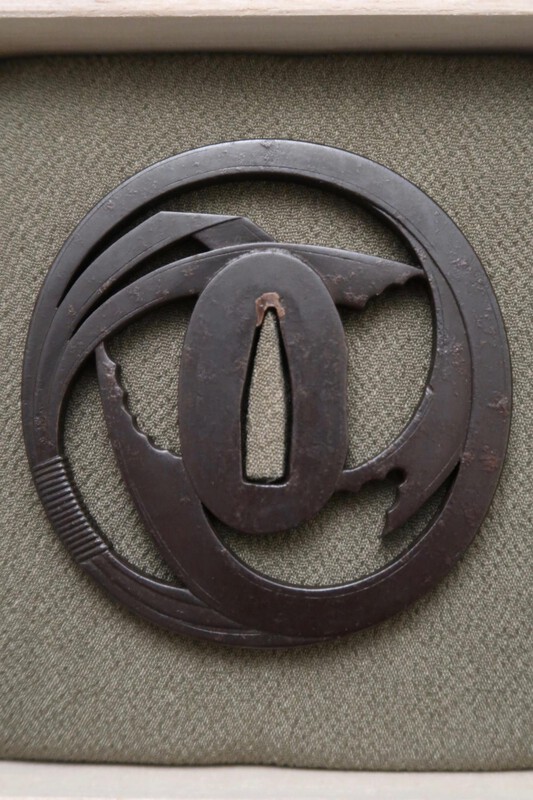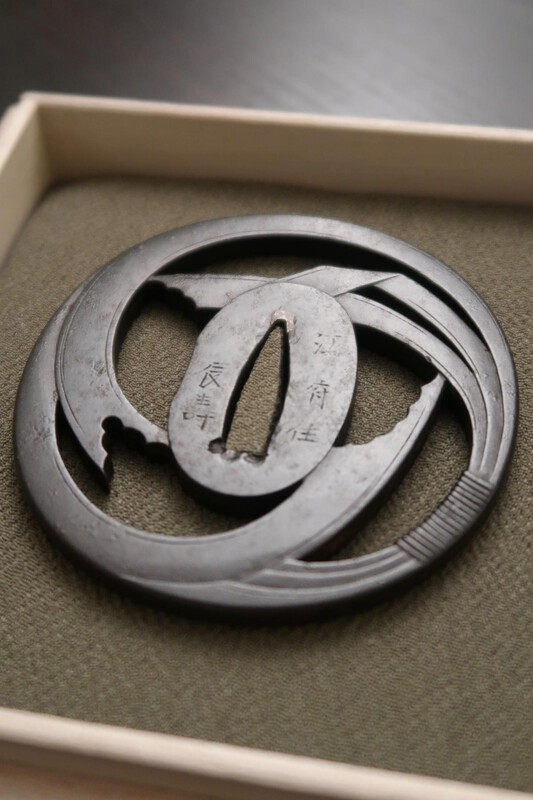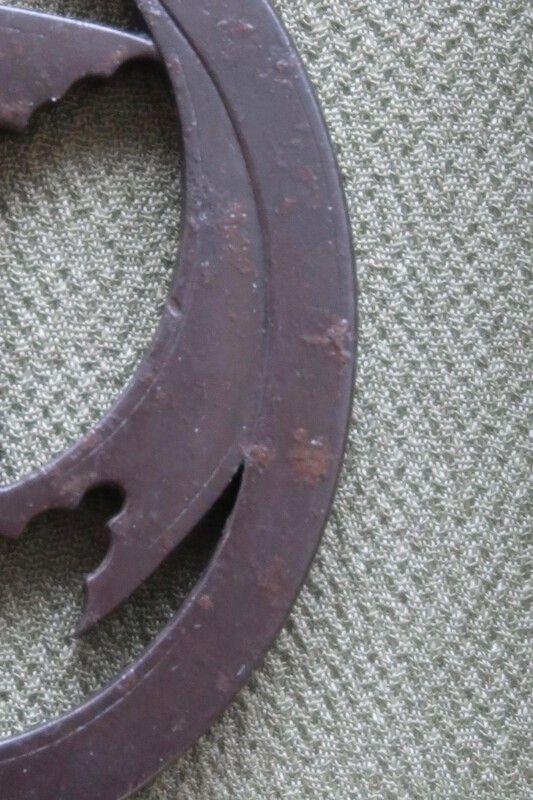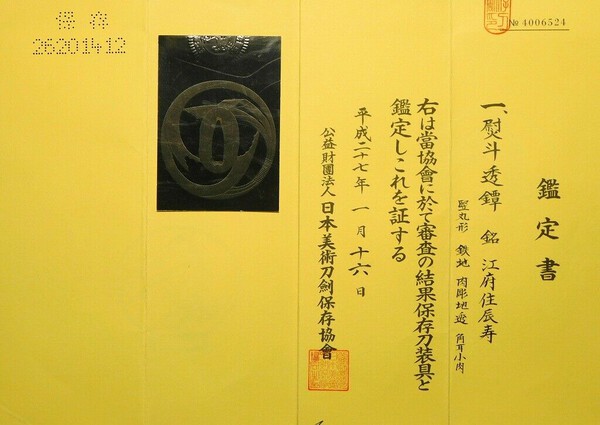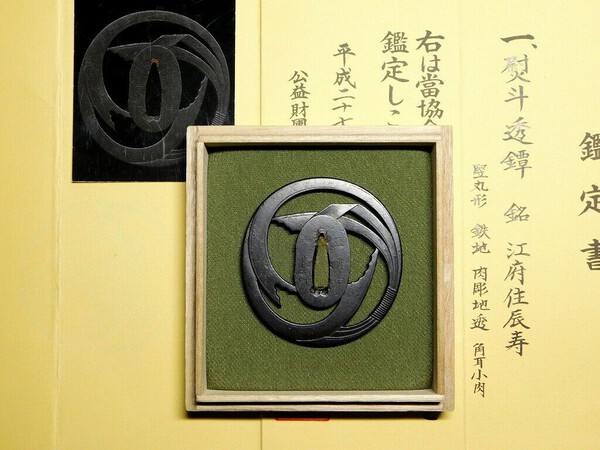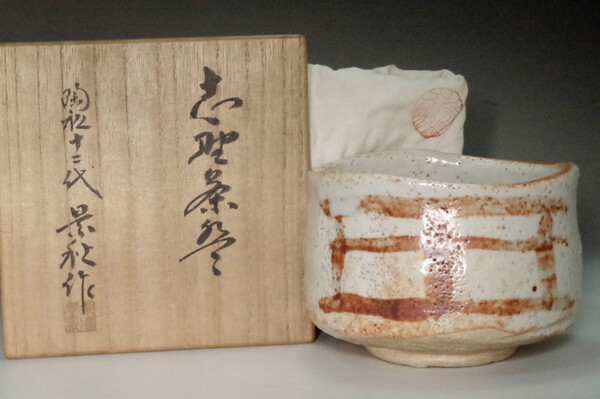-
Posts
756 -
Joined
-
Last visited
-
Days Won
4
Content Type
Profiles
Forums
Events
Store
Downloads
Gallery
Everything posted by PietroParis
-
I was indeed curious about the seller, they are currently "sponsored" on eBay and they sell tsuba at what look like very cheap prices compared to other sellers. Maybe this explains why... Cheers, Pietro
-
Hi Robert, On a mac, I would open each picture with "Preview", rotate it four times (i.e. 360 degrees, back to the original orientation) and then save it. This guarantees that the picture is displayed correctly. Cheers, Pietro
-
Somebody bought it already. P.S. with delivery costs at 59$ it wasn't probably such a good deal for EU-based members...
-
Hi Patrick, thanks a lot for your comments! I'd rather not take risks trying to remove the rust, unless it's really necessary in order to protect the tsuba. Another helpful member of the forum advised me to "stabilize" the rusty spot by dabbing it with choji oil, letting it rest for a night and then removing the oil with a dry cloth. But it will take me some courage even to go for this softer approach (and first I need to find the choji oil!) Cheers, Pietro
-
I hope this means that the original buyer (Jon B) was able to give it back...
-

NBTHK certificate for Tatsutoshi tsuba
PietroParis replied to PietroParis's topic in Translation Assistance
Many thanks to both of you for your great help! Cheers, Pietro -
Hi All, I apologize in advance if my posts about this tsuba in multiple sections of the forum are becoming a bit annoying, but being my first "serious" tsuba - and my second overall! - I am still quite excited about it... Taking decent pictures without a professional camera and lighting appears to be devilishly difficult (at least to me), thus I refer you to the seller for crisper and better-detailed ones. A first question that I would like to ask is whether I should be worried about the few rusty spots on the ura side. They are not particularly ugly, and their visibility depends a lot on the lighting. Indeed, they did not even look red in the seller's pictures, but they can look as bad as this under natural light and from a different angle: My first instinct would be to just do nothing rather than risk scratching or otherwise damaging the tsuba, but I am wondering if this might be the kind of "active" rust that will get worse over time. In that case, what would be the best course of action (possibly one that would not end up costing more than the tsuba itself)? For the rest, the tsuba came with a NBTHK certificate, and I posted a question about it in the Translation section. The seller describes the design as "noshi" (i.e., traditional Japanese ribbons?), and translates the signature as "Efu-ju Tatsutoshi", which I understand from another thread to mean "Tatsutoshi from Edo". In an old book on the MFA collection of tsuba that I found here, I read: "AKAO SCHOOL (...) Tatsutoshi (early in the nineteenth century), a skillful workman, was famed for the fine temper of his iron and the excellence and originality of his designs." I don't know how this judgment from 1908 has held up in the subsequent 111 years. Looking around the internet, I get the impression that this Tatsutoshi must at least have been quite versatile: his signature can be found on tsuba that look very different in style from one another, see e.g. this one from an earlier post on the forum... Is it possible that several artists used the same signature? Thanks a lot in advance for any input you wish to provide! Cheers, Pietro
-
Hi All, A tsuba I recently bought on ebay has arrived, I will post it in the Tosogu section when I manage to get decent pictures (it's harder than I expected, and the bad weather does not help). I wonder if in the meantime I could tap the well of this forum's infinite knowledge by asking for translation of a couple of lines in the tsuba's NBTHK certificate (seller's photo): Thanks to this precious page, I understand that the relevant lines are the second and third from the right, the others being standard stuff which is similar in all certificates. Based on the seller info, I presume that the second line means that the item is a tsuba signed "Efu-ju Tatsutoshi" (i.e., Tasutoshi from Edo). I can recognize that the last five characters correspond to the signature on the seppa-dai. But what does the third line say? Many thanks in advance for any help, Pietro P.S. I suspect that the interpretation of the "punched dot date" given in the page that I linked is incorrect: the first two digits must be the year in the Japanese calendar, the next four the year in the Western calendar, and the last two the month. True?
-

Shipping swords to the UK
PietroParis replied to Harry's topic in General Nihonto Related Discussion
The tsuba has arrived, luckily the seller had written "+ DE 100 ANS" in the description, so it was correctly taxed at 5.5%. However, there was an additional 21 EUR of custom fees. In summary, I bought the tsuba for 356$, which at mid-market rate should correspond to 319 EUR. But then the charges pile up: shipping costs, punitive exchange rate applied by my bank (the one proposed by PayPal was even worse), VAT and custom fees bring the total price to 396 EUR. Something to take into account when making purchases outside the EU... Cheers, Pietro -

Shipping swords to the UK
PietroParis replied to Harry's topic in General Nihonto Related Discussion
Jean-Pierre, I am waiting for a tsuba which has already gone through the customs at Paris CDG, it should be delivered by Chronopost to my place on Monday. I already know that I will have to pay some tax, and I am eager to learn whether they charged the TVA rate for antiques/collectibles at 5.5%, or the generic rate at 20%. For next time, is there a "magic formula" that I should ask the seller to put on the documents to ensure that the object is correctly identified as antique? And in case I find that the French customs overcharged me, do you think it will be possible to get a refund? Thanks for your help! Pietro -
Piers, have you tried to upload your triptych on this site? Cheers, Pietro
-
This one seems in good condition, from a generally expensive dealer, and it goes for 480$. Yours appears to be in a somewhat worse shape - see the stain on the lower-right part - thus I guess it would fetch less (unless it happens to be a much rarer subject, I am not familiar with this series). Cheers, Pietro
-
I too prefer top-left. The top-right one looks slightly green on my screen. Cheers, Pietro
-
It could be. However, according to Wikipedia (not necessarily a reliable source) Lafcadio Hearn moved to Japan only in 1890, at the age of 40. This would be in contrast both with the approximate dating of the painting and with the relatively youthful looks of the model. Cheers, Pietro
-
Also, there's something weird in the menuki of the two swords on the right.
-

Papered Higo Tsuba - unbelivable
PietroParis replied to vajo's topic in Auctions and Online Sales or Sellers
Thanks for the encouraging words! I will post more pictures and ask questions as soon as I receive the tsuba. Cheers, Pietro -
...in traditional Japanese dress in the Musée du quai Branly : Silk paintings, Japan 1870-1880, anonymous. And here are details of the sword handles: Cheers, Pietro
-
On the Facebook post where I first saw this tsuba, somebody was pointing out how the wolf encroaches on the seppa dai, and speculating that the tsuba was never meant to be mounted on a sword. Could that be the case? Cheers, Pietro
-
Oh my, what a beautiful sword!!!
-
South-sea islander with coral was also a common netsuke motif. Cheers, Pietro
-

Papered Higo Tsuba - unbelivable
PietroParis replied to vajo's topic in Auctions and Online Sales or Sellers
Hi All, Inspired by this thread, I set out to find my own moderately-priced papered tsuba on ebay. As often happens in auctions, I got a bit carried away and ended up paying more than I had originally planned. What do you think, is this still a decent deal? Cheers, Pietro -
On page 184 of this PDF on the MFA collection I found a tsuba with a similar (but "flipped", and more detailed) elephant motif. The description reads: " 323. White elephant with treasure ball on its back: iron, gold and silver inlay. Signed by Yasuchika. First half of the eighteenth century. Bigelow Collection. The elephant is not native to Japan, and early representations of it are far from accurate. About 1729 one was sent from Siam as a present to the Shogun, and it seems likely that this animal furnished Yasuchika with a model for the present design. " I hope it helps! Cheers, Pietro P.S. better check this link from the online database of the MFA...
-
Thanks so much Nobody-san!!!
-
Hi All, First of all, let me apologize for using again this section for a non-sword-related question. I have just received a vintage chawan (see this post) and I would love to know what the calligraphy on the box means: The maker is one Kato Kageaki, who was 12th of the Kato line. I can indeed distinguish a 12 in the third and fourth characters ( += ) of the top-left writing, but that's it for what concerns my Japanese skills... Can one of the ever-helpful members of this forum let me know about the rest? Thanks in advance for any help! Cheers, Pietro
-
An update on this dealer: I decided to give it a try and buy this chawan (picture from the dealer's site): The maker is supposedly one Kato Kageaki, who died in 1972 and was the 12th of his line. The signature and overall style of the bowl looks consistent with others that I found online (e.g., this one). My experience with the dealer was flawless: I ordered the bowl on Sunday evening (payment with PayPal); the package was shipped on Monday with EMS, and I received it on Friday morning, with no added fees. Box and bowl were separately wrapped (very carefully) in bubble-wrap and old newspaper, and everything looks exactly like in the pictures on the dealer's website. In summary, I cannot say if I found a great "bargain", but I definitely got what I was expecting, at a quite affordable price. I would say that the dealer is definitely worth keeping an eye on for those interested in pottery (not sure about the tsuba, though Incidentally, another forum member has recently bought a cup from the same dealer, see this thread. I will also profit from the forum members' good will and ask for a translation of the calligraphy on the box (in the appropriate section). Cheers, Pietro



